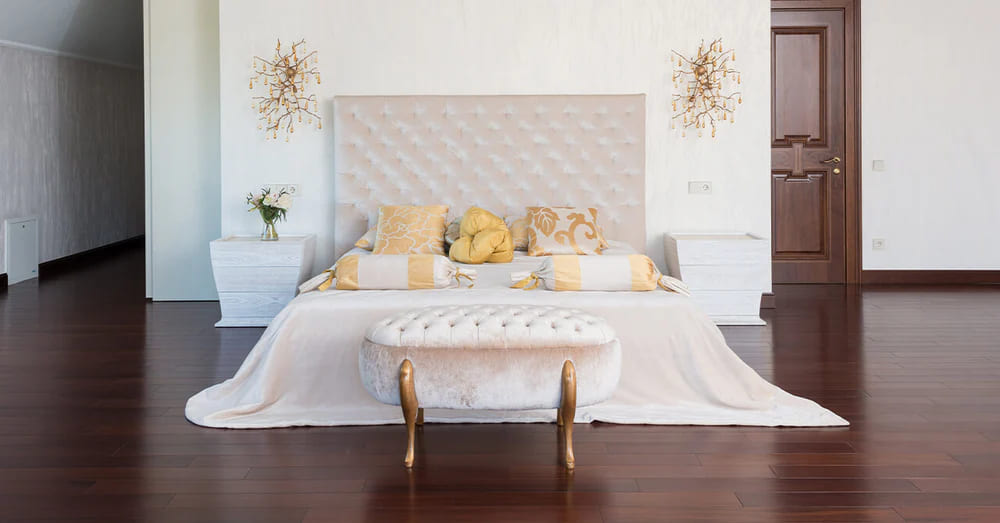Introduction
When it comes to designing or purchasing a home, one of the critical factors to consider is the size of the bedrooms. In the UK, bedroom sizes can vary significantly, influenced by factors such as property type, location, and design standards. This guide aims to provide a clear understanding of the standard bedroom sizes in the UK, helping homeowners and prospective buyers make informed decisions. By exploring typical dimensions, legal requirements, and practical considerations, this article will offer valuable insights into what to expect when it comes to bedroom sizes across different types of properties.
Standard Bedroom Sizes in the UK
1. Single Bedrooms
Single bedrooms, commonly used for children, guests, or as a study, generally adhere to minimum size standards. The typical dimensions for a single bedroom are:
- Width: Approximately 2.4 to 2.7 meters (7.9 to 8.9 feet)
- Length: Around 3.0 to 3.4 meters (9.8 to 11.2 feet)
These dimensions are adequate to accommodate a single bed and provide enough space for basic furniture and circulation. However, the smallest permissible size for a single bedroom is 6.5 square meters (70 square feet), as stipulated by the UK’s Housing Act 1985.
2. Double Bedrooms
Double bedrooms are designed to be more spacious, providing comfort for couples or individuals needing extra space. Typical dimensions for double bedrooms are:
- Width: About 3.0 to 3.5 meters (9.8 to 11.5 feet)
- Length: Approximately 3.5 to 4.2 meters (11.5 to 13.8 feet)
A standard double bedroom usually measures around 10 to 15 square meters (107 to 161 square feet). This size allows for a double bed, bedside tables, and additional storage or seating.
3. Master Bedrooms
Master bedrooms are often the largest bedroom in a home, designed to offer a luxurious and spacious retreat. Typical dimensions include:
- Width: Around 3.5 to 4.5 meters (11.5 to 14.8 feet)
- Length: Approximately 4.5 to 5.5 meters (14.8 to 18.0 feet)
Master bedrooms typically exceed 15 square meters (161 square feet), providing ample space for larger beds, multiple pieces of furniture, and even an en-suite bathroom in some cases.
Legal Standards and Regulations
1. Minimum Size Requirements
The UK has specific regulations regarding minimum bedroom sizes to ensure adequate living conditions. According to the Housing Act 1985, any bedroom used for sleeping must meet the following minimum floor area:
- For a single bedroom: At least 6.5 square meters (70 square feet)
- For a double bedroom: At least 10 square meters (107 square feet)
These standards help ensure that rooms are not too small to be used effectively and safely.
2. Building Regulations
Building regulations also play a crucial role in determining bedroom sizes, particularly in new builds or renovations. These regulations cover aspects such as ventilation, natural light, and access, which indirectly affect the size and usability of bedrooms. Compliance with these regulations ensures that bedrooms meet safety and comfort standards.
Practical Considerations
1. Room Layout and Furniture
When evaluating bedroom sizes, it’s essential to consider the room layout and furniture placement. A well-designed room maximizes available space, making even smaller bedrooms feel more spacious. For example, opting for built-in storage solutions or multi-functional furniture can enhance the usability of smaller bedrooms.
2. Functionality and Personal Needs
The functionality of a bedroom should align with personal needs and lifestyle. For example, a guest bedroom may require less space than a master bedroom, but it should still be comfortable and functional. Assessing how the room will be used can guide decisions on size and layout.
3. Impact of Property Type and Location
Different types of properties and locations can influence bedroom sizes. For instance, new builds might adhere to modern standards that emphasize larger bedroom sizes, while older properties might have smaller dimensions due to historical design practices. Understanding these variations can help buyers set realistic expectations.
Conclusion
Understanding UK bedroom sizes is crucial for anyone involved in buying, designing, or renovating a home. By familiarizing yourself with standard dimensions, legal requirements, and practical considerations, you can make informed decisions that enhance both functionality and comfort. Whether you’re selecting a new home or updating an existing one, knowing the typical sizes and standards will help ensure that your bedrooms meet your needs and expectations. Ultimately, a well-sized bedroom contributes to a more enjoyable and practical living environment, reflecting the importance of thoughtful design and adherence to standards.

